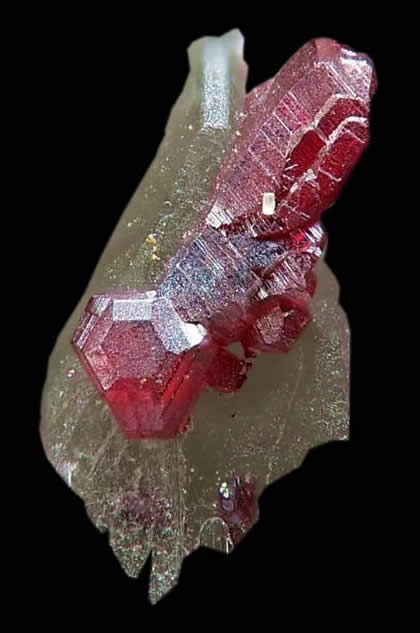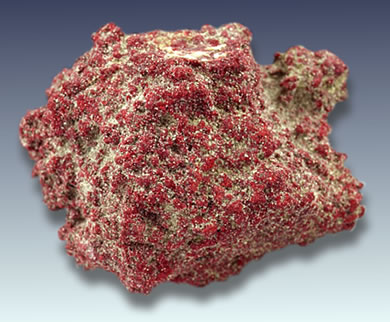Cinnabar Gemstones
Cinnabar gemstones, recognized for their unique multicolored patterns of rich red and soft white, are both visually striking and steeped in cultural significance. Unlike the traditional deep red form, the cinnabar offered here showcases a distinctive blend of white and red hues, adding to its rarity and appeal. Discover our collection of cinnabar gemstones for sale.

Cinnabar Crystals from Spain Having said that, there are a number of interesting minerals that are quite soft but attract gemstone collectors nonetheless. A good example is cinnabar. It is not only a colorful mineral, but it also has some quite unusual gemological properties.
Cinnabar, a mineral primarily made up of mercury sulfide, serves as the main ore of mercury. Its color typically ranges from brick-red to cinnamon red or bright scarlet. Cinnabar is commonly found as a vein-filling mineral linked to recent volcanic events or alkaline hot springs. Ancient Romans utilized cinnabar as both a pigment and a mercury source, while it was also valued for decorative applications in regions such as South America and China.
Cinnabar is notably soft, with a hardness of only 2 to 2.5 on the Mohs scale. However, it is remarkably dense, with a specific gravity of 8.1. By way of comparison, the most dense gemstones commonly sold are spessartite garnet (which has a specific gravity of 4.12 to 4.18), zircon (3.93 to 4.73), sapphire (3.95 to 4.03) and ruby (3.97 to 4.05). Hematite, a less common gemstone, has a density of 5.12 to 5.28.
Indeed, there are only a few minerals of any sort that are denser than cinnabar. These minerals tend to be metals, such as gold (with a density of 15.5 to 19.3) and silver (9.6 to 12.0). For a non-metallic mineral, cinnabar is unusually heavy.

Cinnabar Ore
Cinnabar is not only remarkably dense, it also has an extremely high refractive index (2.905 to 3.256), much higher than that of diamond (2.417 to 2.419), zircon (1.810 to 2.024), demantoid garnet (1.88 to 1.94) or sapphire (1.762 to 1.778). Given these unique properties it is not surprising that cinnabar is popular with collectors.
Cinnabar forms as trigonal crystals, but large, individual well-formed crystals are rare. Usually cinnabar is found in crusts or crystal complexes and massive forms are common. Some rare, fine crystals have been found in Spain and China.
Red cinnabar is primarily found in regions with volcanic activity, where it forms as a result of hydrothermal deposits. Some of the main sources of red cinnabar include Spain, Italy, China, Mexico, and the United States. These regions have geological conditions that are conducive to the formation of cinnabar deposits, making them key locations for mining and extracting this mineral. |
